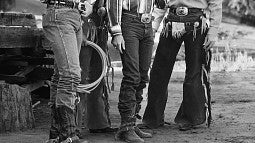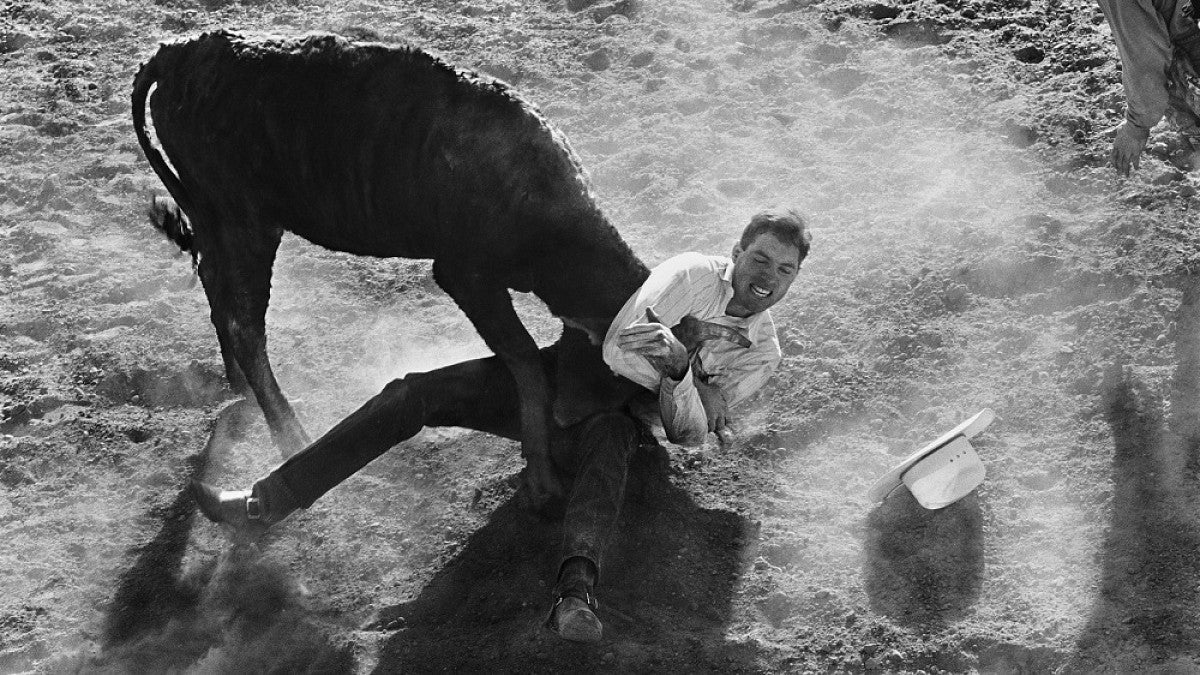Saddle up, everyone. It’s rodeo time at the Museum of Natural and Cultural History.
Next month, the museum welcomes visitors to the grand opening of “Blake Little: Photographs from the Gay Rodeo,” a traveling exhibit from ExhibitsUSA and the Mid-America Arts Alliance. Featuring 41 black-and-white images, the exhibit blends classic portraiture, sport photography and authentic rodeo swag to spotlight a time-honored LGBTQIA tradition within the collective heritage of the American West.
The opening celebration is set for Saturday and Sunday, Sept. 7 and 8, from 11 a.m. to 5 p.m. at the museum on the UO campus.

“Gay rodeo dramatically reveals an integral part of Western community,” said Craig Miller, a Utah-based folklorist who will come to campus this fall in connection with the exhibit. “It also celebrates the fusion of seemingly disparate cultures: the courage, humor and expression of urban gay America with the grit of rural cowboy heritage.”
Born and raised in Seattle, Blake Little attended his first gay rodeo in 1988.
“The sport, camaraderie and atmosphere of this first rodeo experience transformed me,” he said. “I was completely drawn to it and I had to be a part of it. I wanted to be a cowboy.”
Over the next several years he became increasingly involved in the gay rodeo community and the International Gay Rodeo Association.
“These photographs represent an amazing, magical time in my life,” he said. “Back then, I questioned if I was a ‘real’ cowboy because in the back of my mind I always felt like an observer, and photography was my first passion. But my unique situation allowed me to document the growing sport of gay rodeo from the inside along with the thrills and personal challenges of fulfilling my cowboy dreams.”

Admission to the weekend celebration includes guided exhibit talks and refreshments, and visitors can enter a drawing for free tickets to Museum After Hours on Oct. 25, a rodeo-themed, 21-and-over event co-sponsored by Falling Sky Brewing and Walnut Ridge Vineyard and featuring a group lesson in rodeo swing dancing with Miller.
Miller will also give a public talk at the museum Oct. 24 at 6 p.m. The talk, “Gay Rodeo: A Celebration of Western Rural Heritage and Gay Culture,” is included with regular museum admission and co-sponsored by the UO’s Department of History, the Folklore and Public Culture Program and LGBT Education and Support Services.
In addition to the new exhibit, visitors can head to the adjacent “Oregon—Where Past is Present” hall to explore the work of featured Indigenous artist Anthony Hudson/Carla Rossi. A member of the Confederated Tribes of Grand Ronde, Hudson/Rossi is a multidisciplinary performance artist — best known as Portland’s premier drag clown — whose work exposes cracks in white supremacism and binary sexism by blurring concepts around race and gender.
“We are thrilled to present Blake Little’s stunning photography and celebrate the vibrant community of the gay rodeo circuit,” said Ann Craig, exhibitions director at the UO museum. “The exhibit is a powerful testament to the creativity, courage and spirit of LGBTQIA people and communities throughout the rural West.”
—By Kristin Strommer, Museum of Natural and Cultural History


